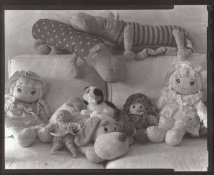Vaughn
Subscriber
Vaughn, I've got a dozen rolls of 120 I need to develop. Some are of my boys when they were in college and some of the others? I really need to develop them.
Takes some getting used to using the x-ray film as a tissue support but you can use it over and over
I had 10 rolls to develop -- I went into work early a few mornings last week and developed 4 at a time.
The x-ray film as tissue support -- would it be approbiate for first-time printers (workshops), or would it be better to stick with the much more flexible .004" litho film I normally use?











 ). Next time I go out to take pictures I'm going to make duplicates of every shot and will develop them specifically for carbon.
). Next time I go out to take pictures I'm going to make duplicates of every shot and will develop them specifically for carbon.